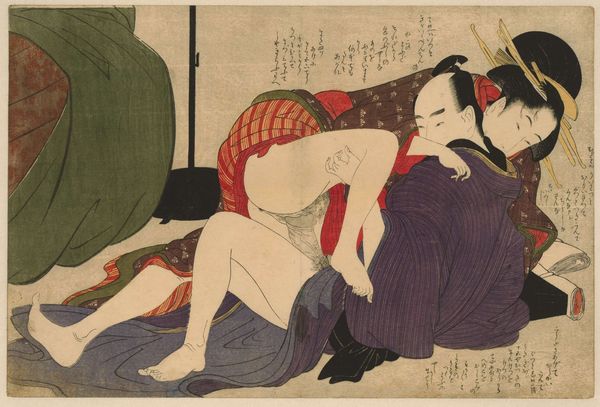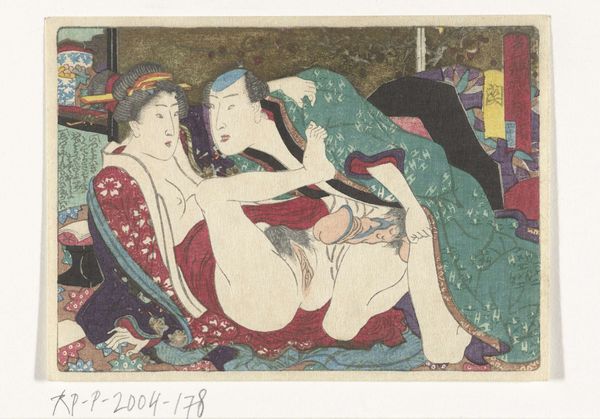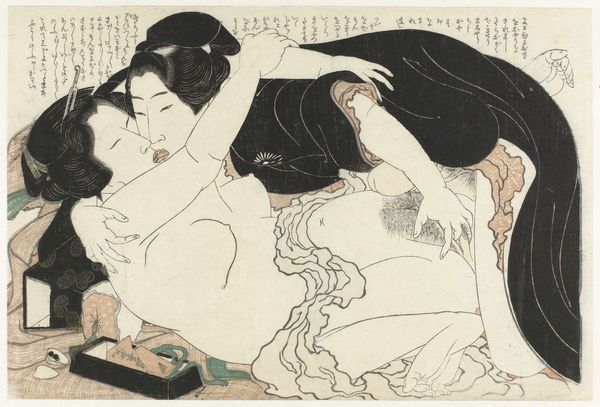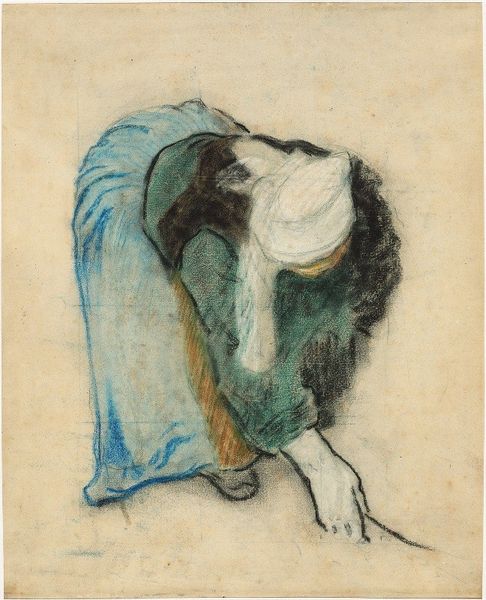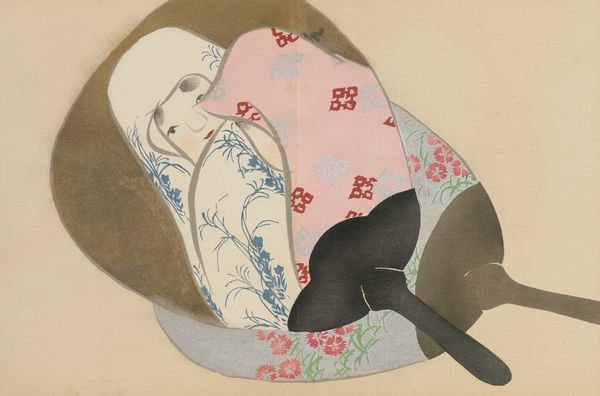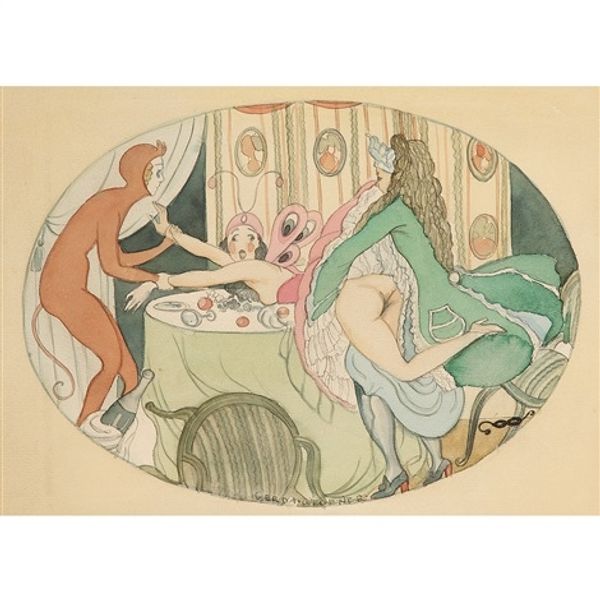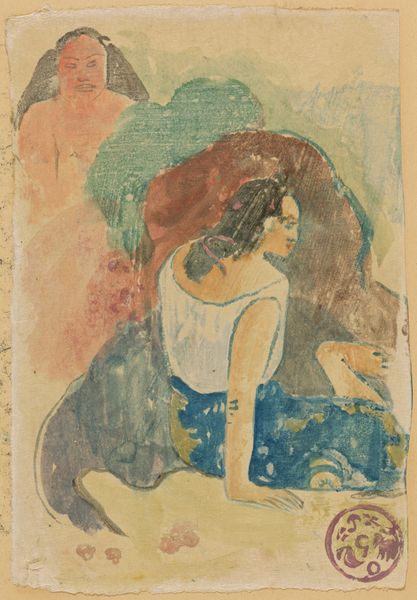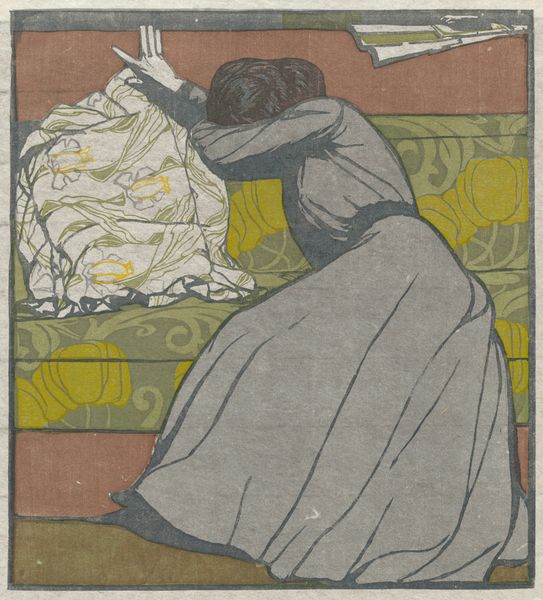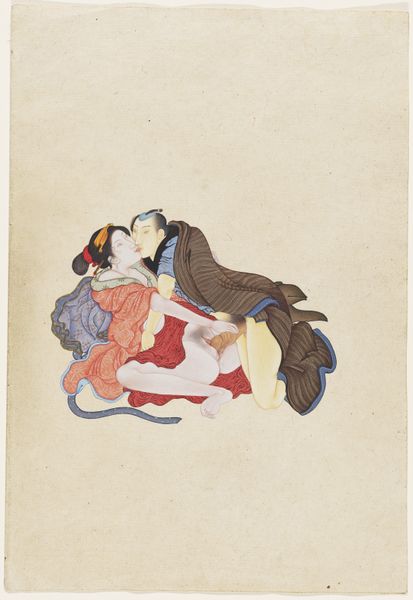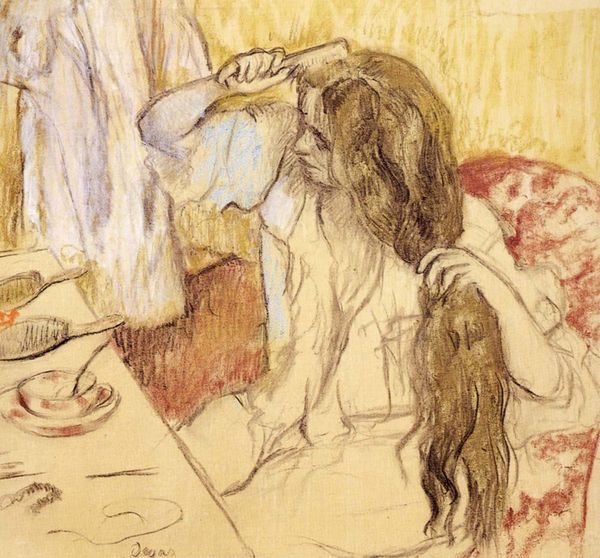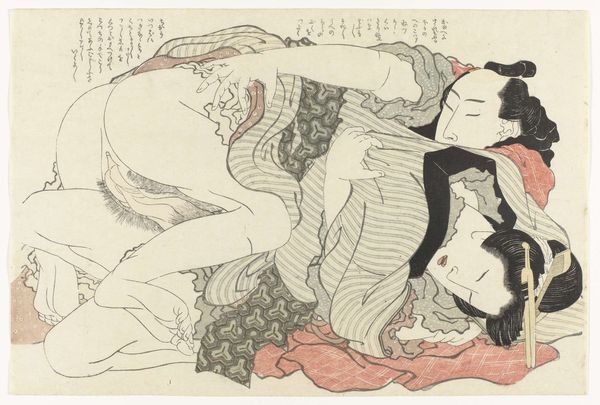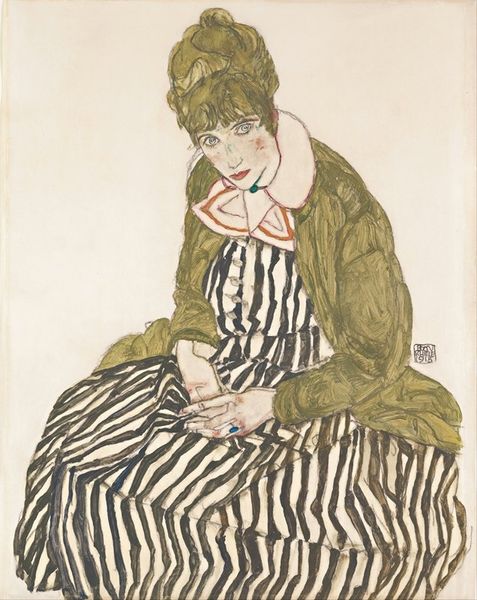
drawing, painting, paper, watercolor, ink
#
portrait
#
drawing
#
painting
#
pencil sketch
#
figuration
#
paper
#
watercolor
#
ink
#
intimism
#
expressionism
#
watercolour illustration
#
genre-painting
#
modernism
#
watercolor
Copyright: Public domain
Curator: Immediately, I get a sense of… secret rendezvous. It's like peeking into a hidden, tender moment. Editor: Yes, there's a definite intimacy. This piece by Jules Pascin, aptly titled "Two Girls on the Ground," was created around 1909. Pascin employed ink, watercolor, and pencil on paper. What strikes you about the application of these materials? Curator: The fragility. The way the watercolor bleeds softly… it's as if the scene itself might dissolve any second. And yet, the strong, assured lines of the pencil keep it grounded, like the ghost of a promise. Does that make sense? Editor: Absolutely. The visible pencil sketch beneath the washes reveals Pascin’s process, showing us the labor of creation, almost like uncovering the bones beneath the skin. The transparency speaks volumes about the materials themselves, their ability to both conceal and reveal. And look at how the textures create such dynamism! It resists being categorized as either simply drawing or painting, challenging these distinctions. Curator: And those long, languid limbs! The girls almost melt into the ochre couch, it's almost… intoxicating, I feel. You know, Pascin had such a turbulent life, constantly battling demons. Do you think that kind of fragility, and intensity, found its way onto the paper here? Editor: Most definitely. His use of such delicate mediums echoes the precariousness of life itself. But I also think about the availability of paper, ink, watercolors in Parisian studios in the early 20th century. Art supplies were becoming increasingly commercialized and accessible. How does knowing this impacts your response? Curator: Hmm…that they're not grand women on velvet chairs, dripping jewels... But women made real through common materials available, rendered on accessible paper – like they’re brought closer to us in our shared everyday reality, accessible now but for all time. Their touch rendered visible through such materials. Editor: Precisely. The materials ground them, anchoring their presence in both the studio and this very moment. It also democratizes art, doesn’t it? It speaks to a shift in what’s considered worthy of representation, and whose stories are deemed worthy of being told, challenging the boundaries between “high art” and everyday life. Curator: That accessibility somehow enhances the beauty, doesn't it? As if the ephemeral nature of the moment, and the materials, make it all the more precious. Editor: Yes, and by thinking through the materiality of Pascin’s drawing, it invites us to really see not just what's depicted, but how it's brought into being. Curator: Well, that’s given me a whole new layer to savor when I look at the painting, that’s for sure!
Comments
No comments
Be the first to comment and join the conversation on the ultimate creative platform.
